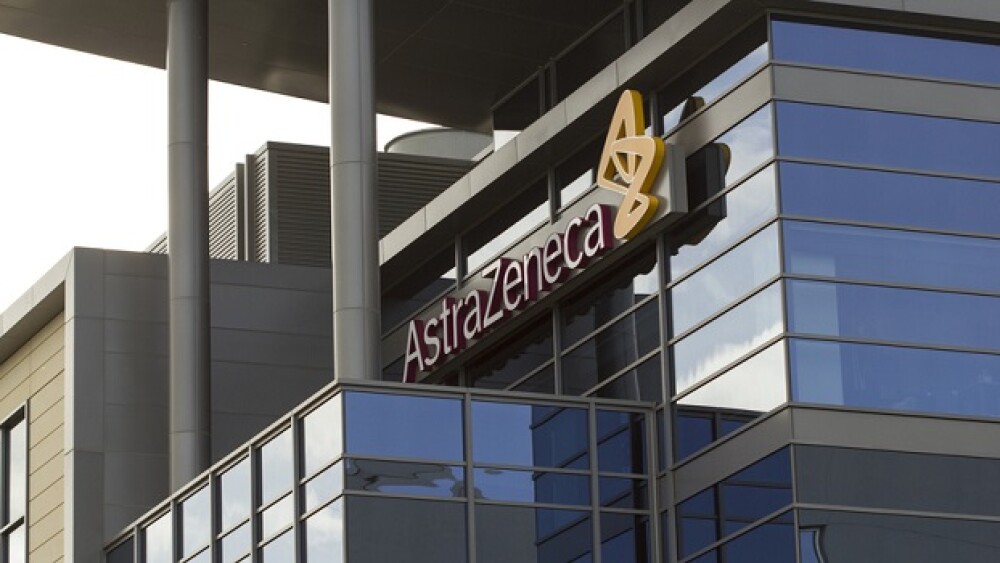The regulator’s approval means AstraZeneca’s Tagrisso can now be used in combination with chemotherapy for locally advanced or metastatic EGFR-mutated non-small cell lung cancer patients.
Pictured: AstraZeneca’s office in California/iStock, hapabapa
The FDA on Friday approved the use of AstraZeneca’s Tagrisso (osimertinib) in combination with chemotherapy to treat advanced non-small cell lung cancer patients harboring EGFR mutations.
The regulatory win reinforces Tagrisso “as the backbone of EGFR-mutated lung cancer treatment either as a monotherapy or in combination with chemotherapy,” Dave Fredrickson, executive vice president of AstraZeneca’s oncology business unit, said in a statement, adding that the approval also provides an important treatment option “for those with a poorer prognosis, including patients whose cancer has spread to the brain and those with L858R mutations.”
Tagrisso’s other non-small cell lung cancer (NSCLC) indications include first-line use in metastatic disease, its use as an adjuvant therapy after resection and in metastatic NSCLC that has progressed after EGFR tyrosine kinase inhibitor (TKI) treatment.
Friday’s approval is based on the results of the Phase III FLAURA 2 study, which demonstrated that Tagrisso plus chemotherapy could prolong progression-free survival (PFS) by around nine months relative to Tagrisso alone. Investigator assessments showed that patients who received the combination regimen had a median PFS of 25.5 months versus 16.7 months for those patients who received the EGFR-TKI alone.
A blinded independent central review corroborated these findings, demonstrating a 29.4-month median PFS in the Tagrisso plus chemotherapy group, compared to 19.9 months in monotherapy counterparts.
Fredrickson in a statement called these data “a new benchmark” and “the longest reported progression-free survival benefit in the first-line advanced setting.” AstraZeneca published FLAURA 2’s results in The New England Journal of Medicine in November 2023.
Beyond PFS, FLAURA 2 also evaluated overall survival (OS) outcomes for Tagrisso with chemotherapy. While data for this endpoint were immature at the time of the second interim analysis, AstraZeneca detected “no trend towards a detriment.” FLAURA 2 is ongoing to assess OS as a key secondary endpoint.
In terms of safety, adverse events were generally manageable and consistent with what had been previously established for Tagrisso and the individual chemotherapy drugs. However, patients treated with the combo regimen saw a higher rate of side effects, though AstraZeneca said that this was “driven by well-characterized chemotherapy-related” adverse events. Dropouts were low in both arms.
Tagrisso’s FDA approval on Friday continues AstraZeneca’s regulatory rally. In January 2024, the pharma secured the regulator’s Priority Review designation for its supplemental Biologics License Application, seeking to extend the indication of its Daiichi Sankyo-partnered Enhertu (fam-trastuzumab deruxtecan-nxki).
In December 2023, AstraZeneca and partner Ionis Pharmaceuticals won approval for their antisense therapeutic Wainua (eplontersen) for polyneuropathy in hereditary transthyretin-mediated amyloidosis.
Tristan Manalac is an independent science writer based in Metro Manila, Philippines. Reach out to him on LinkedIn or email him at tristan@tristanmanalac.com or tristan.manalac@biospace.com.






